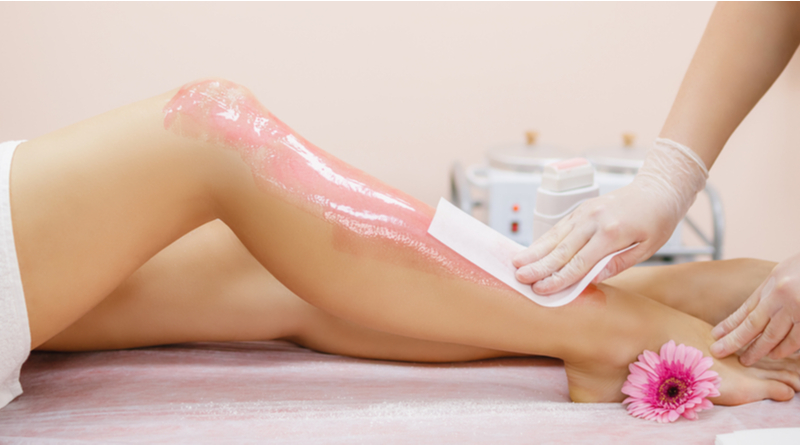What is Waxing?
Waxing is the process of hair removal from the root by using a covering of a sticky substance, such as wax, to adhere to body hair, and then removing this covering and pulling out the hair from the follicle.
What 3rd level courses are available?
Universities and colleges in Ireland are offering courses in Waxing in the following subject areas:
- ITEC Level 2 Waxing Certificate Course – This Waxing Certificate Course qualification is ideal for candidates who wish to specialize in waxing Full leg, Bikini line, Underarm, Forearm, Lip, and Chin.
- Facial Waxing Course – Learn the techniques and methods of facial waxing.
- Combo Basic and Advance Waxing Course – Learn the basics and more advanced techniques in waxing with this combo course.
- Basic Female Waxing Course – Learn the basics of female waxing.
- Advance Female Waxing Course – Learn more advanced levels of female waxing.
- Specialized Female Waxing Course – This course specializes in the application of Brazilian style Waxing, Hollywood style Waxing, and Californian style Waxing among other types of Waxing for females.
- Basic Male Waxing Course – Learn the basics of male waxing.
- Advance Male Waxing Course – Learn more advanced levels of male waxing.
- Specialized Male Waxing Course – This course specializes in the application of Brazilian style Waxing, Hollywood style waxing, and Californian style waxing among other types of Waxing for males.
Studying Waxing in college
There are many courses in Waxing that take place over 1 year to 4 years depending on the course and modules selected. There are also part-time courses and night courses available so you can be sure to fit in your studies no matter what your schedule is like.
Courses will cover theory work through lectures, assignments, tutorials, and taught modules. Assessments will take place continuously with written examinations and practical assignments combined to achieve a qualification.
You could also consider work experience or a work shadow in the industry. By job shadowing and carrying out work experience assisting a professional in the field you’ll gain valuable insight, develop your client base, build a network of contacts and demonstrate your commitment to the profession. Observation is one of the best ways to learn skills and techniques.
Career options
After completing a Waxing course you will be able to get started in a career that uses specific knowledge of waxing and hair removal treatments and techniques.
In this profession, you will usually work within a spa or a salon that offers a range of beauty treatments, or you may be self-employed and work to find your clients and build up your client list, which may mean working from home or traveling to clients.
To create a successful career, you need to build up a good reputation, which will lead to an increased client base. Marketing your business is important, and networking with other practitioners and complementary therapists may help. Regulation of the profession includes a strong code of ethics. Confidentiality and discretion are important.
Your working hours will depend on whether you are self-employed, employed by a facility with set business hours, or if you are contracted to various facilities or companies. Your working hours will reflect your client’s needs and many spas and salons open early in the morning, in the evening, and at weekends.
Related jobs include:
- Waxer
- Hair Removal Specialist
- Beauty Therapist
- Beauty Technician
- Makeup Artist
- Nail Technician
- Salon Manager
- Massage Therapist
- Senior beauty therapist
- Salon trainer
- Product distributor and trainer
- Media/theatre make-up artist
- Fashion make-up artist
- Cruise ship beauty/spa therapist
- Salon receptionist
- Senior spa therapist
Further study
After completing a course in Waxing you may choose to pursue further study in a specialist field to increase your knowledge base and skillset. Postgraduate study can also be used as a means to change career focus or to gain professional qualifications required to practice in certain career areas such as cosmetology, massage, hairdressing, or nails.
FAQ
What are the different types of waxing?
There are two main methods of waxing: hot waxing and warm waxing.
With warm waxing, the wax is applied directly to the skin using a spatula. Strips of fabric are smoothed over the wax and then removed quickly, removing the wax and hair from the skin.
Hot waxing uses hot wax applied directly to the skin. The wax is left to cool and harden on the skin. The corner of the wax is then lifted and the wax is pulled directly off the skin. Hot waxing helps to open the pores more before the strips are removed, making it better suited to more sensitive areas.
What are the benefits of waxing?
There are many benefits to waxing versus other forms of hair removal. It is an effective method to remove large amounts of hair at one time. It is a long-lasting method, as hair in waxed areas will not grow back for two to eight weeks. When hair is shaved or removed by depilatory cream, the hair is removed at the surface rather than the hair root. Within a few days, the hair can reappear back at the surface. With these methods, hair tends to grow back in rough stubble.
Will my hair grow back thicker, darker, or heavier after waxing?
No, it will not. Waxing removes the hair by the root, often weakening the root in the process. Therefore, if anything, waxing will make the hair finer and sparser with repeated regular waxing.
Where can I study Waxing?
Explore your options here
Did You Know?
· Wax won’t work on wet areas. For heated wax to remain warm and workable, the area being waxed needs to remain dry at all times, as any moisture will cause the wax to harden immediately.
· All areas of the body can be waxed. Hair removal for women has become such a versatile beauty routine that multiple hair removal products can now be used to remove hair from all areas of the body, including the legs, back, bikini area, underarms, and facial area.
· Using hot wax on the skin opens up the pores, which can often remain open for hours following a wax. To ensure your pores remain clean and free of bacteria and oil, thoroughly cleanse the area before and after a wax and avoid wearing tight-fitting clothing.
· Waxing removes dead skin cells! Not only are you removing unwanted hair, but you’re exfoliating your skin. When the wax is removed from your skin, it gently strips away dead cells and leaves a brand new layer of skin – leaving you with a smooth glow.
· With shaving, the hair is cut at the skin line, leaving behind the bulb. Hair grows back very quickly due to the stimulation of lifting the hair bulb. Increasing oils and blood circulation better nourishes the hair, which encourages it to grow faster. Shaved hair is always cut at a slant, making the hair sharp and uncomfortable. Shaved hair always grows back in coarse, sharp stubble within 24-hours.












Comments